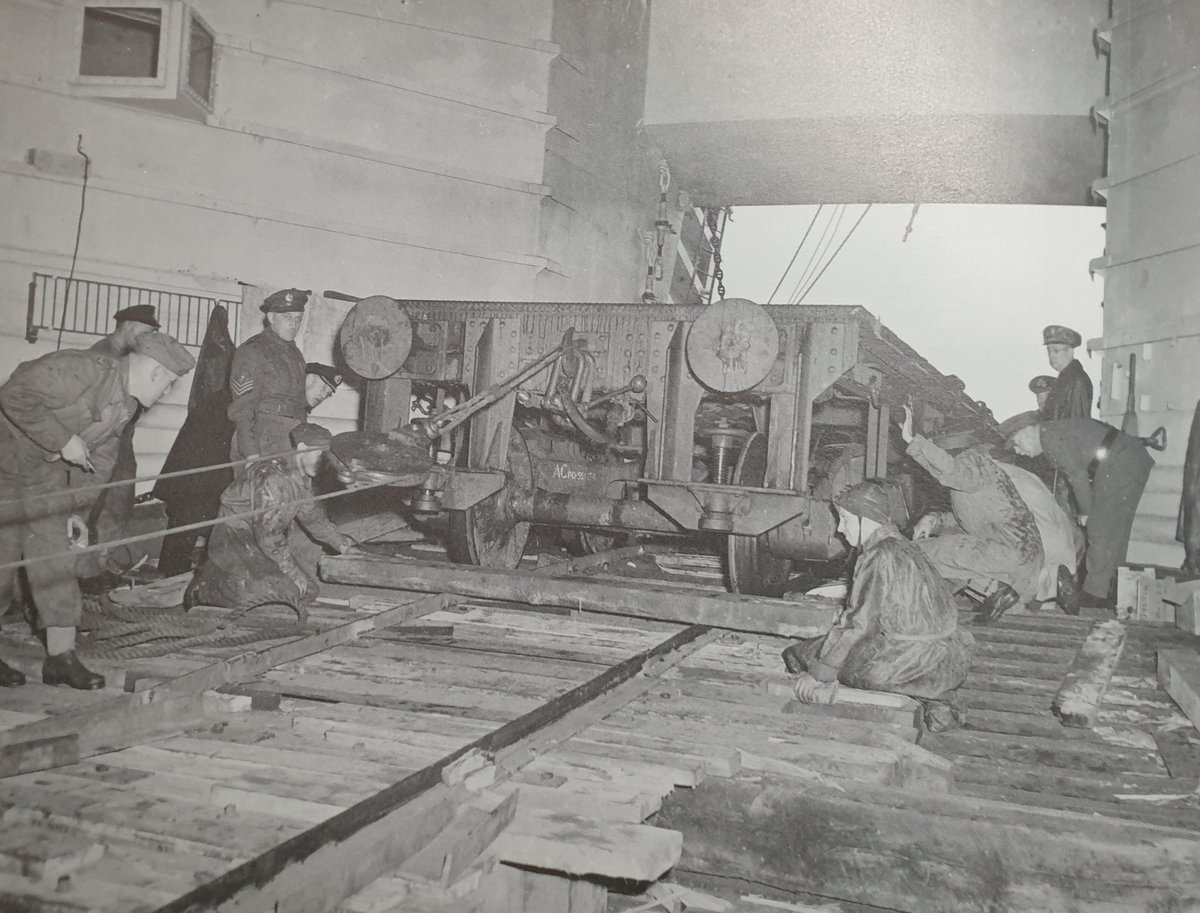
🇬🇧 The British Army's railway capability. Army Reserve, Royal Engineers, part of @65_group
12ENGGP-REWorksGroup-RECRUITING@mod.gov.uk
How to get URL link on X (Twitter) App





 2/ Who can join? We recruit reservists directly from the Rail industry and rail heritage sectors. We recruit infrastructure operatives to engineer grades with specialist backgrounds in design, renewals and maintenence in track, civil engineering, signalling and electrification.
2/ Who can join? We recruit reservists directly from the Rail industry and rail heritage sectors. We recruit infrastructure operatives to engineer grades with specialist backgrounds in design, renewals and maintenence in track, civil engineering, signalling and electrification. 




 2/ The first trains. There is evidence as far back as the Crimean war of the use of railways for movement of casualties. The US Civil war saw wholesale use of rail for troop trains and dedicated hospital trains for mass casualty movements. Use followed in the Franco Prussian War.
2/ The first trains. There is evidence as far back as the Crimean war of the use of railways for movement of casualties. The US Civil war saw wholesale use of rail for troop trains and dedicated hospital trains for mass casualty movements. Use followed in the Franco Prussian War. 

 2. Infra destruction. In the early stages of the Ukraine conflict many key railway bridges were blown to deny their use for Russian forces, latterly Russian forces would target tunnels, bridges and other infra to disrupt the Ukrainian network managed by @Ukrzaliznytsia.
2. Infra destruction. In the early stages of the Ukraine conflict many key railway bridges were blown to deny their use for Russian forces, latterly Russian forces would target tunnels, bridges and other infra to disrupt the Ukrainian network managed by @Ukrzaliznytsia. 






 1/Genisis. The first armoured trains were built by the Austro Hungarians in 1845. The US Civil War in 1862 would see use of the fledgling technology mating 32pdr cannon to wagons and would be used by both sides to protect the railroads.
1/Genisis. The first armoured trains were built by the Austro Hungarians in 1845. The US Civil War in 1862 would see use of the fledgling technology mating 32pdr cannon to wagons and would be used by both sides to protect the railroads. 

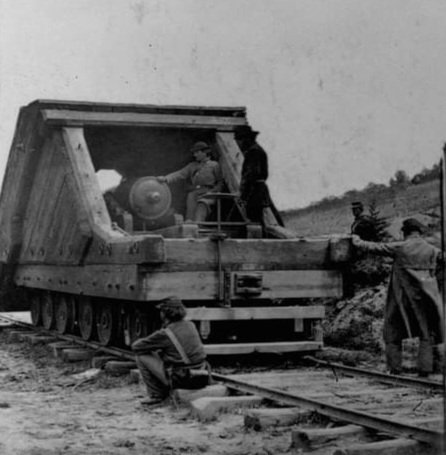


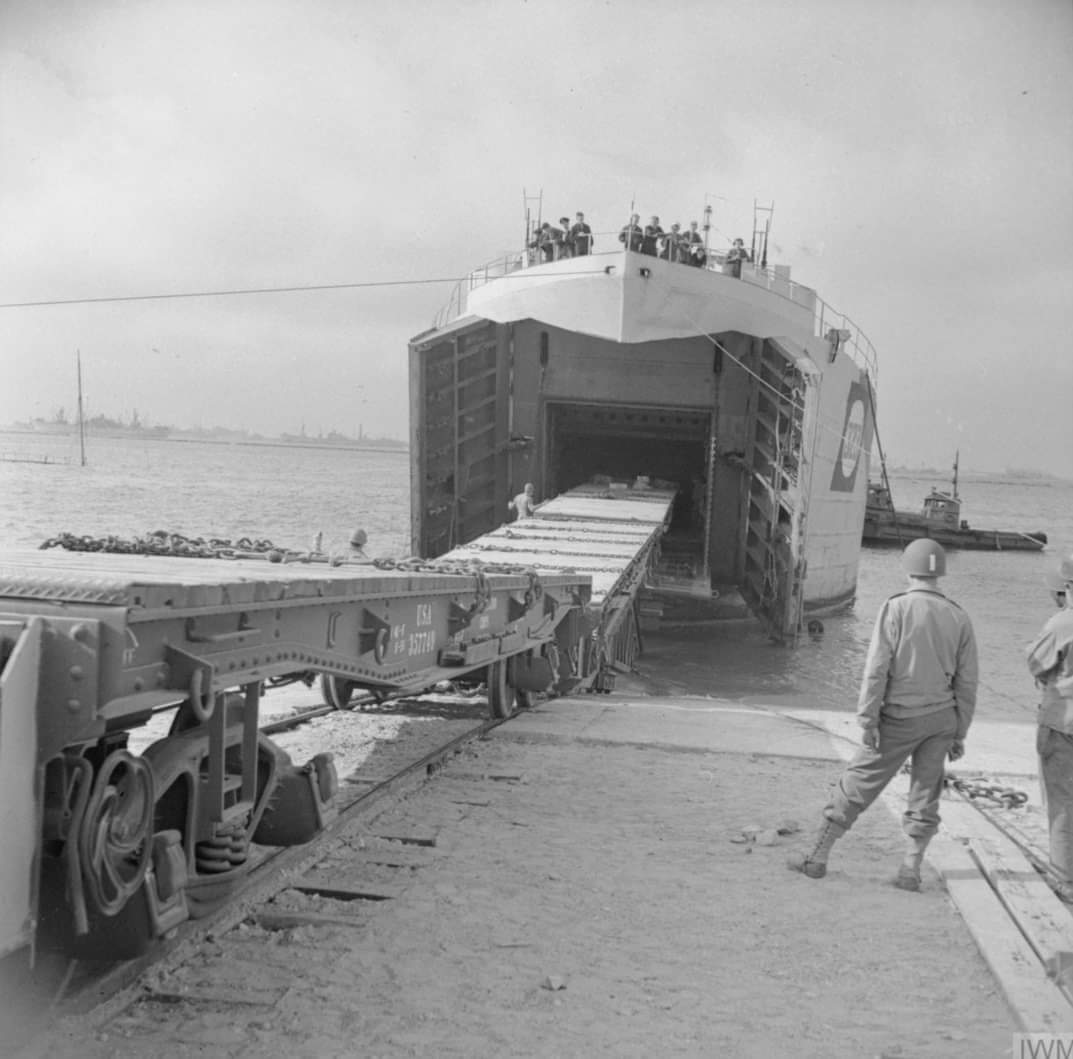
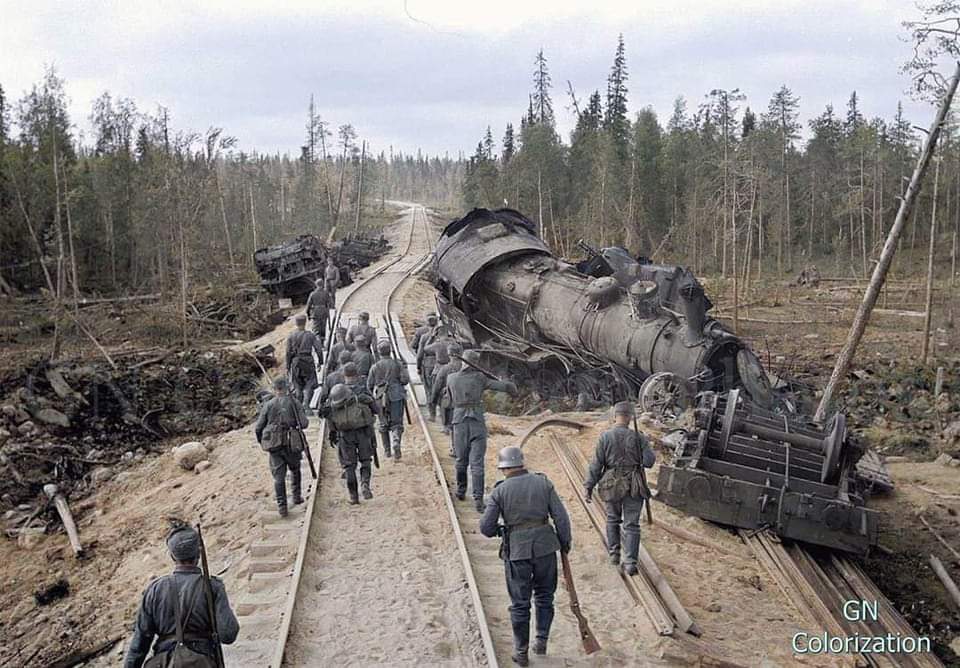
 1/Wickham armoured rail cars. These were bought in the 1950s by the British for use in Malaya to secure rail LofC latterly they were bought for the same duties by the Government of Vietnam and served throughout that conflict.
1/Wickham armoured rail cars. These were bought in the 1950s by the British for use in Malaya to secure rail LofC latterly they were bought for the same duties by the Government of Vietnam and served throughout that conflict. 




 1/ The Parrot Wagon. Copied from an existing LNWR design in 1917, this was the worlds first tank carrying wagon. Designed to carry 40t and fitted with screw jacks to prevent dynamic loading of the bogies whilst loading/unloading tanks. These jacks would appear on all tank wagons.
1/ The Parrot Wagon. Copied from an existing LNWR design in 1917, this was the worlds first tank carrying wagon. Designed to carry 40t and fitted with screw jacks to prevent dynamic loading of the bogies whilst loading/unloading tanks. These jacks would appear on all tank wagons. 


 1/Location. RHD will need to use existing rail network in the Corps assembly areas. Later in the operation more tactical RHD will be pushed forward into the Div and Bde areas for replenishment of specific comodities as demand is established to tempo of operations.
1/Location. RHD will need to use existing rail network in the Corps assembly areas. Later in the operation more tactical RHD will be pushed forward into the Div and Bde areas for replenishment of specific comodities as demand is established to tempo of operations. 


 2/ Infra Constraints. Loading gauge is the physical constraint on the size of rolling stock and loads imposed by physical infrastructure. This includes station platforms & canopies, retaining walls, bridges and tunnels. This is all proportional to the placement of the track.
2/ Infra Constraints. Loading gauge is the physical constraint on the size of rolling stock and loads imposed by physical infrastructure. This includes station platforms & canopies, retaining walls, bridges and tunnels. This is all proportional to the placement of the track. 



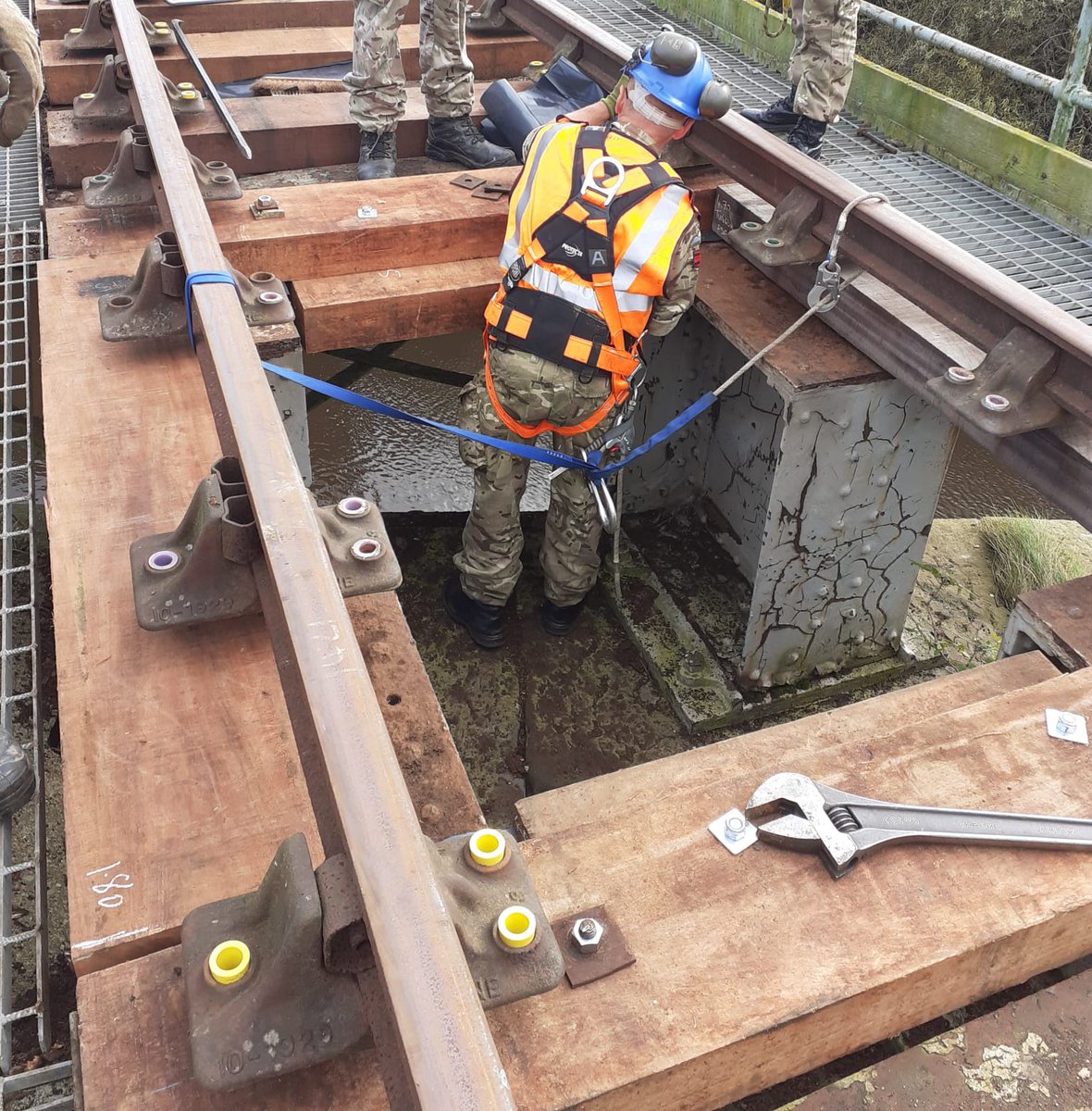
 1/Historically railways up to the 1940s used timber trestles given good availability of lumber and wood working skills. With increased axle loadings & speeds alongside availability of sawn timber this method fell by the wayside. Photo: Longmoor, 1941.
1/Historically railways up to the 1940s used timber trestles given good availability of lumber and wood working skills. With increased axle loadings & speeds alongside availability of sawn timber this method fell by the wayside. Photo: Longmoor, 1941. 

 1/ Heavy lift wagon fleet. Challenger MBT is reliant on 6 axle SALMMs wagons to move, these are limited in the UK to HS1 but are cleared in Europe. The wagon pool is small therfore the fleet strength needs increase given all NATO nations are reliant on it for MBT.
1/ Heavy lift wagon fleet. Challenger MBT is reliant on 6 axle SALMMs wagons to move, these are limited in the UK to HS1 but are cleared in Europe. The wagon pool is small therfore the fleet strength needs increase given all NATO nations are reliant on it for MBT. 
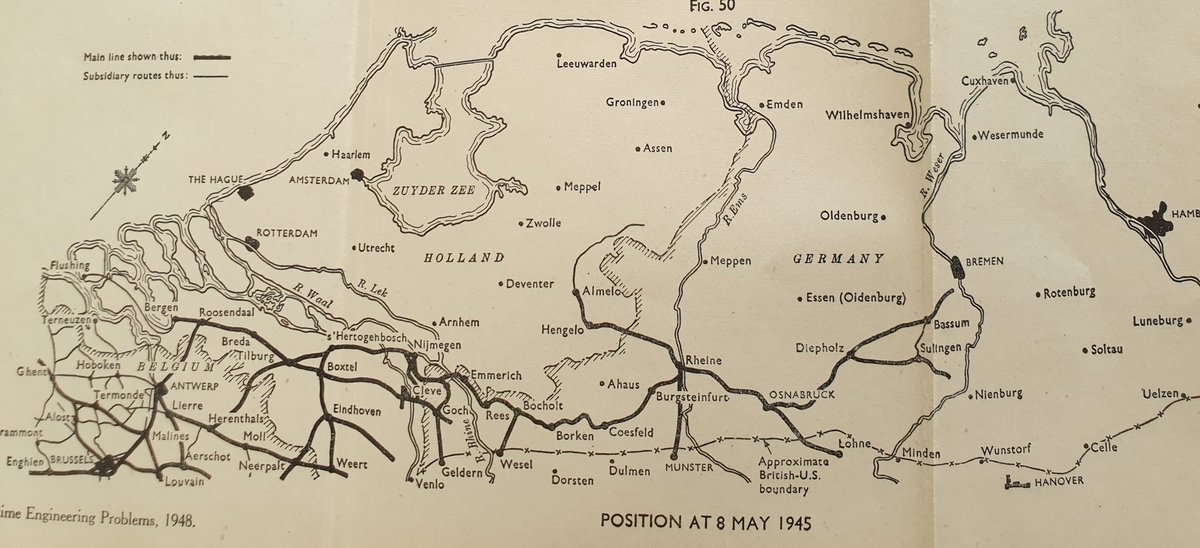
 On 24th March 1945, Op Varsity Plunder commenced, the crossing of the Rhine at Wesel. 1056th Engr Group, US Army Engineer Corps bridged the Rhine by the 9th of April at Wesel using British trestles on timber piles and 1752ft of 4ft deep RSJ and 2 miles of track.
On 24th March 1945, Op Varsity Plunder commenced, the crossing of the Rhine at Wesel. 1056th Engr Group, US Army Engineer Corps bridged the Rhine by the 9th of April at Wesel using British trestles on timber piles and 1752ft of 4ft deep RSJ and 2 miles of track. 




 The port could not be used till the enemy were cleared from Walchere and mines removed. The Germans had removed 207 turnouts and 35 miles of track. 8 bridges had been destroyed. These were replaced with RSJ spans and UCRB. The flyover was salvaged and placed on trestle piers
The port could not be used till the enemy were cleared from Walchere and mines removed. The Germans had removed 207 turnouts and 35 miles of track. 8 bridges had been destroyed. These were replaced with RSJ spans and UCRB. The flyover was salvaged and placed on trestle piers 



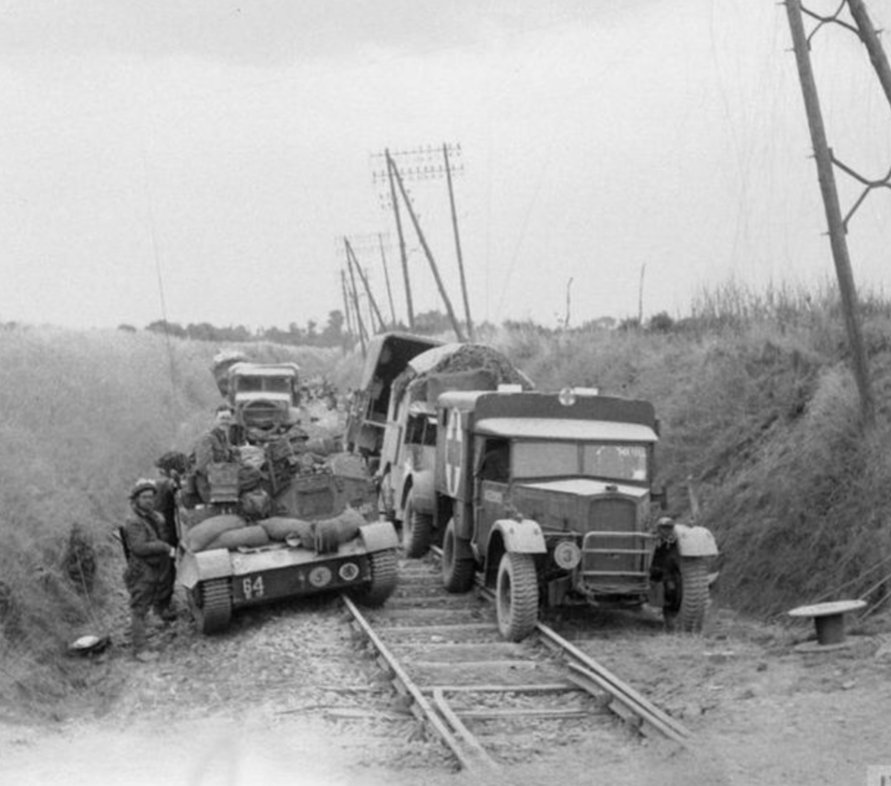
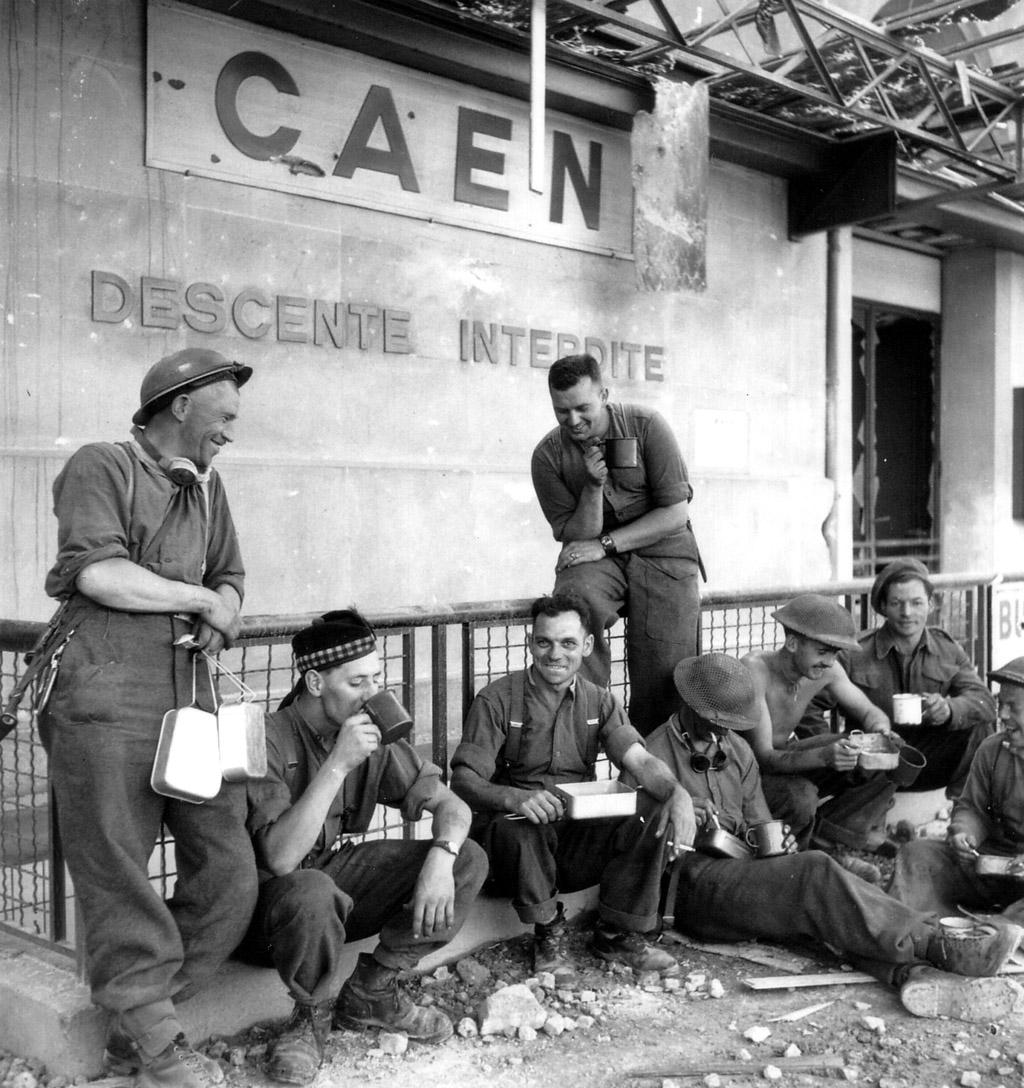 The RE railway troops were organised under the Way and Works group as Rly Survey Coys, Rly Bridging Coys and Rly Construction Coys. This was augmented with Pioneer Coys and Plant Coys. Some 200 Officers and 7000 men were available for the task.
The RE railway troops were organised under the Way and Works group as Rly Survey Coys, Rly Bridging Coys and Rly Construction Coys. This was augmented with Pioneer Coys and Plant Coys. Some 200 Officers and 7000 men were available for the task. 



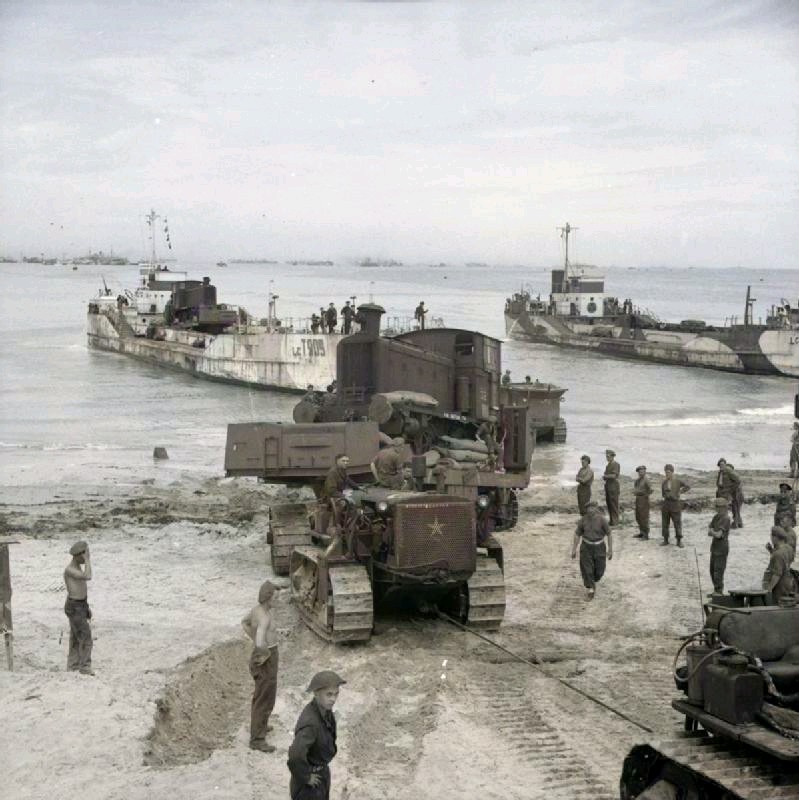


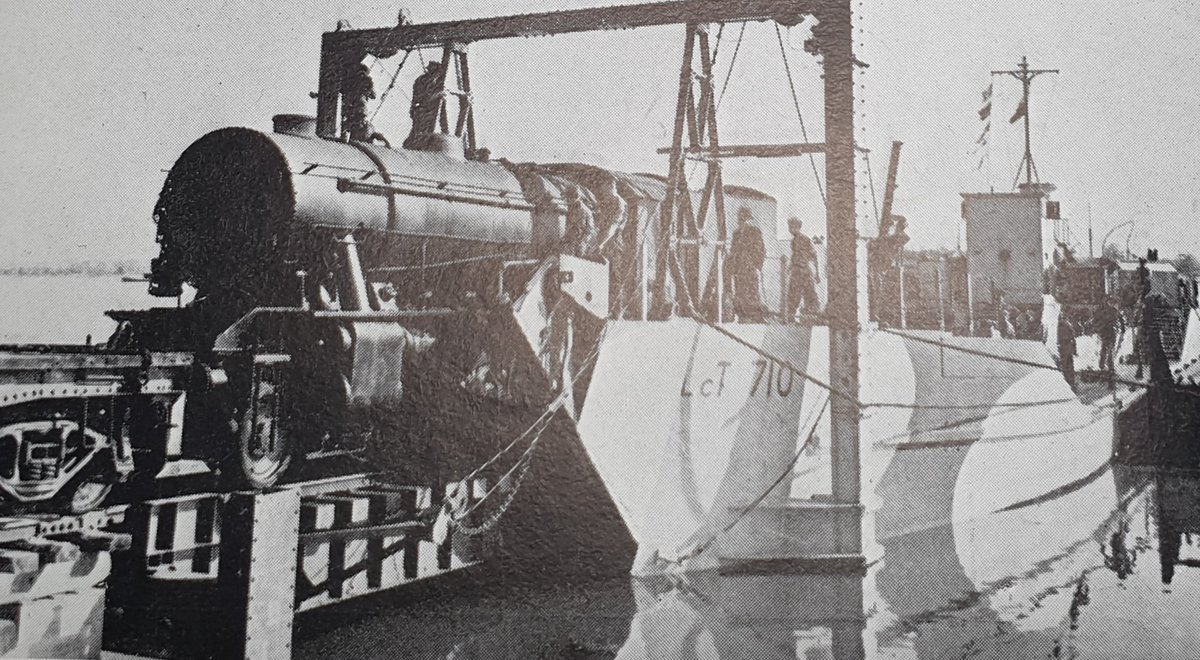
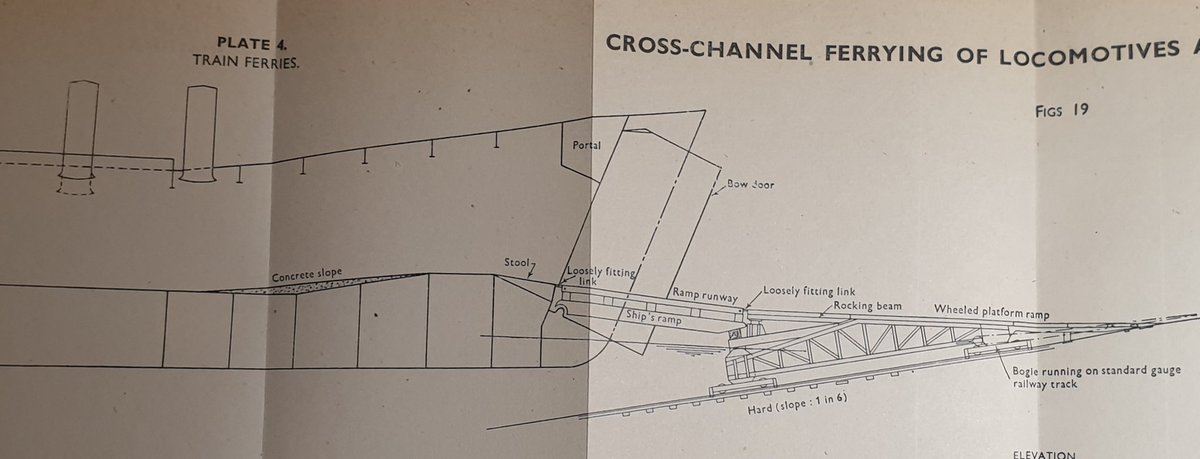 Loading trial by RE troops in a Landing Ship Tank prior to D-Day.
Loading trial by RE troops in a Landing Ship Tank prior to D-Day.